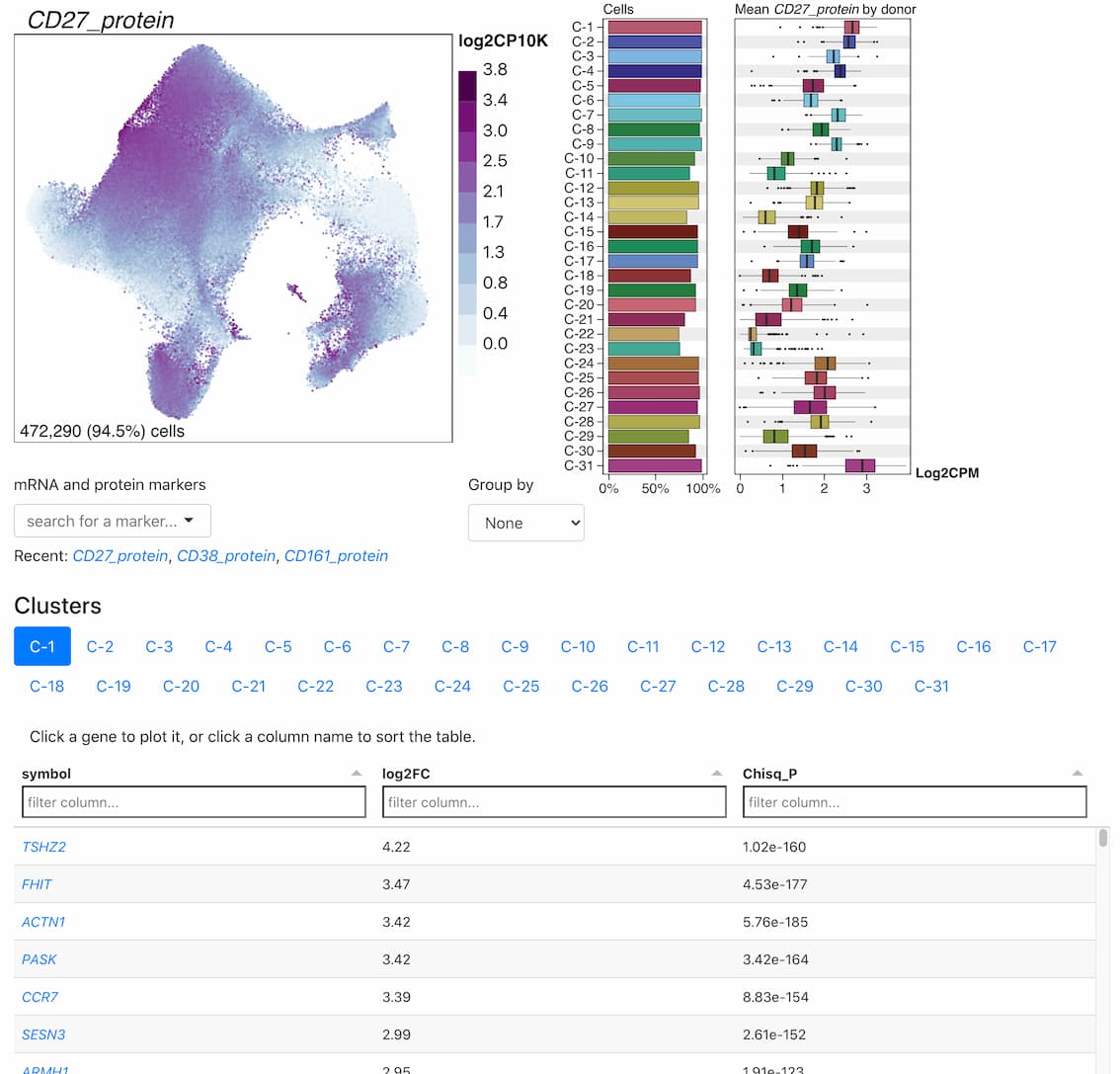
TBRU: Memory T cells from a TB progression cohort
Multimodally profiling memory T cells from a tuberculosis cohort identifies cell state associations with demographics, environment and disease
Aparna Nathan, Jessica I Beynor, Yuriy Baglaenko, Sara Suliman, Kazuyoshi Ishigaki, Samira Asgari, Chuan-Chin Huang, Yang Luo, Zibiao Zhang, Kattya Lopez, Cecilia S Lindestam Arlehamn, Joel D Ernst, Judith Jimenez, Roger I Calderón, Leonid Lecca, Ildiko Van Rhijn, D Branch Moody, Megan B Murray, Soumya Raychaudhuri
Nature Immunology 2021. doi: 10.1038/s41590-021-00933-1

Abstract
Multimodal T cell profiling can enable more precise characterization of elusive cell states underlying disease. Here, we integrated single-cell RNA and surface protein data from 500,089 memory T cells to define 31 cell states from 259 individuals in a Peruvian tuberculosis (TB) progression cohort. At immune steady state >4 years after infection and disease resolution, we found that, after accounting for significant effects of age, sex, season and genetic ancestry on T cell composition, a polyfunctional type 17 helper T (TH17) cell-like effector state was reduced in abundance and function in individuals who previously progressed from Mycobacterium tuberculosis (M.tb) infection to active TB disease. These cells are capable of responding to M.tb peptides. Deconvoluting this state-uniquely identifiable with multimodal analysis-from public data demonstrated that its depletion may precede and persist beyond active disease. Our study demonstrates the power of integrative multimodal single-cell profiling to define cell states relevant to disease and other traits.
Single-cell CITE-seq data from the Tuberculosis Research Units Network (TBRU-N).
View the data
On this website, we provide interactive data browsers to view all of the transcriptomics data for each of the manually curated cell clusters.

Get the code
The source code for data analysis is available at:
Get the data
Download the data from NCBI GEO:
Contact us
Please contact us with any questions or comments.


